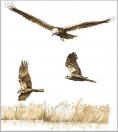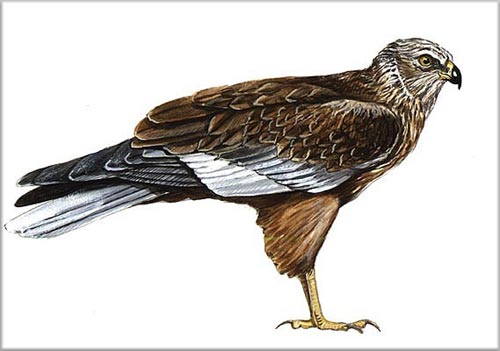Marsh Harrier - Circus aeruginosus
Diurnal raptor most associated with fresh water wetlands.
The adult male is unmistakable on account of his grey parts (tail and remiges) and black-tipped wings.
The females and juveniles, non easy to tell apart, have a more or less dark brown plumage with creamy marks on the nape and forewings.
The body outline is slender, the tail looks slightly wedged and when it glides it carries its wings in a "V" (typical of all harriers).
It is easy to spot as it methodically patrols the vegetation, beating its wings, then gliding briefly and again stopping for a moment suspended in the air to then swerve briskly to dive on its prey in the cane thickets. Its prey mostly consists of small mammals, water birds, eggs, amphibians and insects.
Polygamous, rather gregarious species, it sometimes nests in sorts of colonies (sometimes mixed with other harriers) with 3-5 nests within a range of a few hundred metres.
The nest is usually built in the thick emergent marshland vegetation (reed thickets, bulrush stands etc.). The Italian nesting population tends to be sedentary; in winter it is joined by a considerable over-wintering contingent from central and north Europe.
Recently a few pairs have been confirmed to be nesting in the Fucecchio Marshes Nature Reserve.





